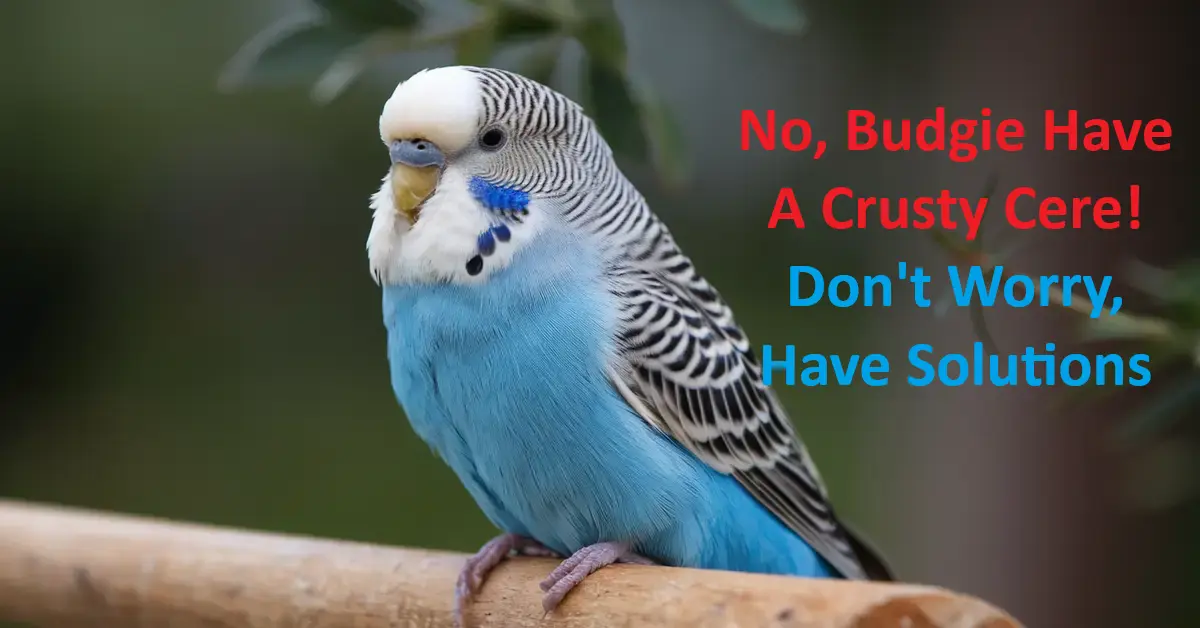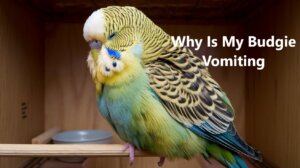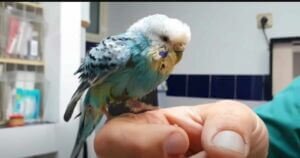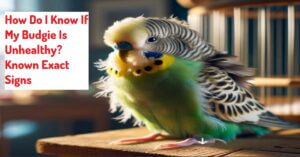Why Does My Budgie Have A Crusty Cere?
A crusty cere in budgies typically results from nutritional deficiencies or hormonal imbalances, a mite infestation, or a fungal or bacterial infection, requiring prompt veterinary attention for proper diagnosis and treatment.
As a bird lover and a long-time budgie owner, I’ve spent countless hours understanding my feathered friends. One of the common questions I see is, “Why does my budgie have a crusty cere?”
This tiny patch above your budgie’s beak might be a small spot, but when it becomes crusty, it signals something’s off. Cere issues are significant because they can indicate anything from simple hormonal changes to severe health problems.
Knowing the causes and remedies to keep your budgie happy and healthy is essential. Below, I’ll explore the details, from hormones to infections, with expert opinions and personal insights.
What Is a Budgie’s Cere?
The cere is the soft, often-colored area just above a budgie’s beak. It’s not just for looks—this spot has small nostrils and helps your budgie breathe.
It’s typically blue in males, while it can range from brown to white in females, especially during mating season. You can also read about male vs female budgies.
Why Does a Budgie’s Cere Become Crusty?
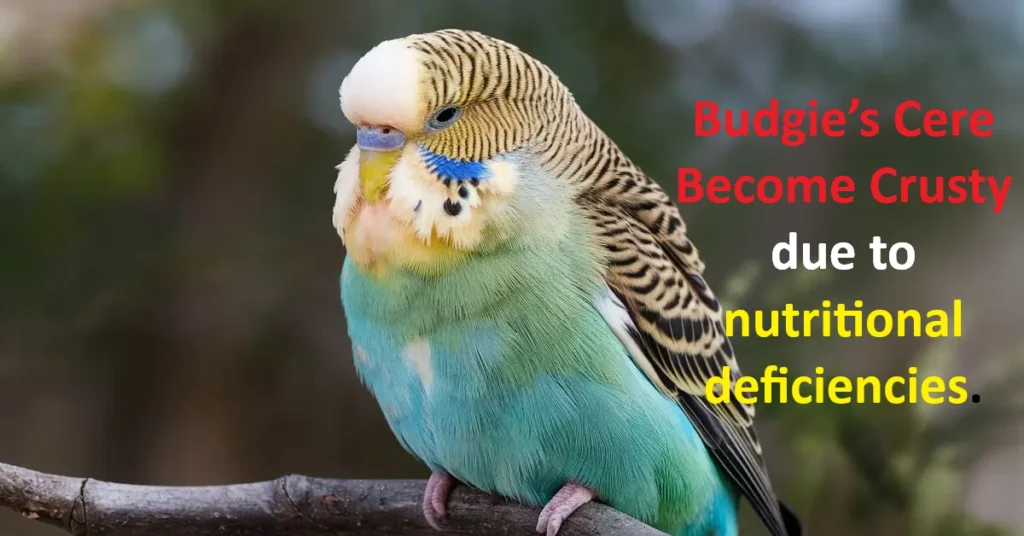
A crusty cere can appear for several reasons, from hormonal shifts to mites or infections. Knowing the root cause helps you act fast to ensure your budgie’s well-being.
1. Hormonal Changes – Especially in Female Budgies
Female budgies, especially during breeding, may develop a thicker, brownish crust on the cere. This is normal and typically fades when the hormonal levels balance post-breeding.
Young female budgies may develop slight crustiness as they mature, which doesn’t indicate a health problem. (Read more—Is my budgie male or female?)
2. Scaly Face Mites – A Silent Invader
Scaly face mites, scientifically known as Knemidokoptes pilae, are a common cause of a crusty cere. These mites dig under the skin, causing the cere to thicken and develop a rough texture.
How to Spot Mite Infestations:
- Cere Texture: Becomes rough, thickened, and crusty.
- Other Symptoms: Mites can spread to legs, causing crusty scales.
Expert opinion: A study from the Avian Pathology Journal noted that up to 30% of untreated budgies develop mite issues, especially if housed in high humidity.
Treatment: Your vet may recommend a topical or oral anti-parasitic treatment. Important: Always quarantine a new budgie to avoid spreading mites. Regular cage cleaning is crucial to prevent re-infestation.
3. Vitamin A Deficiency – A Nutritional Problem
Budgies need Vitamin A to maintain healthy skin and feathers. A lack of essential vitamins, particularly vitamin A, can lead to poor skin health, causing dryness and crustiness in the cere and other areas.
Symptoms: Dull feathers, lethargy, and poor appetite.
Solution: Offer vitamin-A-rich foods such as carrots, spinach, and sweet potatoes. (Read details about can budgies eat sweet potatoes.) Vitamin supplements may also be beneficial under a vet’s guidance.
4. Respiratory Infections – Often Missed
Sometimes, respiratory infections cause a budgie’s cere to look crusty. Infected birds may also have a discharge around the nostrils, often mistaken for mites or crust.
How to Recognize an Infection:
- Wheezing or Sneezing: Frequent respiratory noises.
- Discharge: Watery or mucous discharge from the cere.
- Crust Formation: Often forms a thin crust due to the dried discharge.
Forum Insight: A budgie owner on Reddit shared, “I noticed my budgie had a slightly crusty cere with some discharge. After a vet visit, we found out it was a respiratory infection.”
Respiratory infections need immediate vet care for antibiotics to prevent serious complications.
5. Hormonal Tumors – Rare but Real
Some female budgies develop hormone-related tumors that affect the cere. These are rare but can cause severe crusting or enlargement of the cere area.
Signs of Hormonal Tumors:
- Abnormal Cere Growth: The cere may look swollen or overly crusty.
- Behavioral Changes: Less active or more irritable.
- Feather Loss: Around the cere or face area.
Vet Insight: One vet journal reported that 1 in 100 budgies could develop hormonal tumors, often requiring surgical intervention or hormone therapy.
Note: Always consult a vet if your budgie shows abnormal growths or persistent crustiness around the cere.
How Can I Prevent a Crusty Cere in My Budgie?

Prevention is crucial. A balanced diet, regular check-ups, and a clean cage environment can help maintain your budgie’s health.
Here are preventive measures:
- Maintain a Balanced Diet: Include Vitamin A-rich foods like carrots, broccoli, and leafy greens.
- Regular Vet Check-Ups: Twice a year helps detect any health issues early.
- Clean Environment: Mites and infections thrive in dirty environments. Clean your budgie’s cage weekly.
When to Visit the Vet?
If you notice that your budgie’s cere has been crusty for over two weeks, it’s time for a vet check. Sudden changes in cere color or texture could indicate underlying health problems.
Ask Yourself:
- Has it been more than two weeks?
- Is the crustiness spreading or thickening?
- Are there additional symptoms like wheezing or discharge?
Expert Dr. Steven Browning, an avian vet, emphasizes the importance of a nutrient-rich diet and regular check-ups. “A crusty cere might look minor but can indicate major health issues if untreated,” he warns.
FAQs on Budgie Have A Crusty Cere
1. Can a crusty cere affect my budgie’s breathing?
Yes, a severely crusty cere can impact your budgie’s breathing if it blocks the nostrils. Regularly check for any discharge or blockage around the cere, as this can make it difficult for your budgie to breathe properly. If you observe any respiratory distress, contact a vet immediately.
Do male budgies also get crusty ceres?
Yes, although it’s more common in females, male budgies can develop crusty ceres too, especially if they have mites or nutritional deficiencies. Male budgies’ ceres typically stay blue, but if crustiness appears, it’s worth investigating for underlying issues.
Can stress cause cere issues in budgies?
Stress can weaken a budgie’s immune system, making it more susceptible to infections, mite infestations, and nutritional deficiencies, leading to a crusty cere. Minimizing stress factors—like loud noises, sudden temperature changes, or overcrowded cages—can help keep your budgie healthy.
How long does it take to see improvement after treating a crusty cere?
Depending on the cause and severity of a crusty cere, it usually takes about 2-3 weeks to notice improvement after beginning treatment. For mites, improvements can start within days, while nutritional issues might take longer as the body rebuilds its reserves.
5. Is a crusty cere contagious to other birds?
If caused by scaly face mites, a crusty cere is contagious, so quarantine the affected budgie to prevent spreading mites to other birds. In cases due to hormonal changes or diet, it’s not contagious, but maintaining proper hygiene is essential for all birds’ health.
Can I treat a crusty cere at home?
Minor cases due to diet can be improved with better nutrition. But if mites or infections are suspected, seek veterinary advice.
Sum Up
Understanding why your budgie has a crusty cere is essential to being a responsible pet owner. A crusty cere can signal several things, from mites and infections to nutrition issues and hormonal changes.
Regular vet visits, a clean cage, and a balanced diet ensure your budgie stays happy and healthy. Don’t wait if you notice changes—your budgie’s health depends on it.
If you found this helpful, please share this article with other budgie owners and spread awareness about caring for our feathered friends. Happy bird-keeping.
Thanks.
Hello Dear, I'm Poli Kolymnia, owner of many birds (including budgies).
With a deep passion for these feathered companions, I'm here to share my expertise and extensive knowledge on birds care.
My articles cover essential topics like diet, housing, care, and health, providing practical tips to help you create a happy and thriving environment for your birds.

